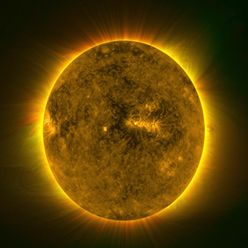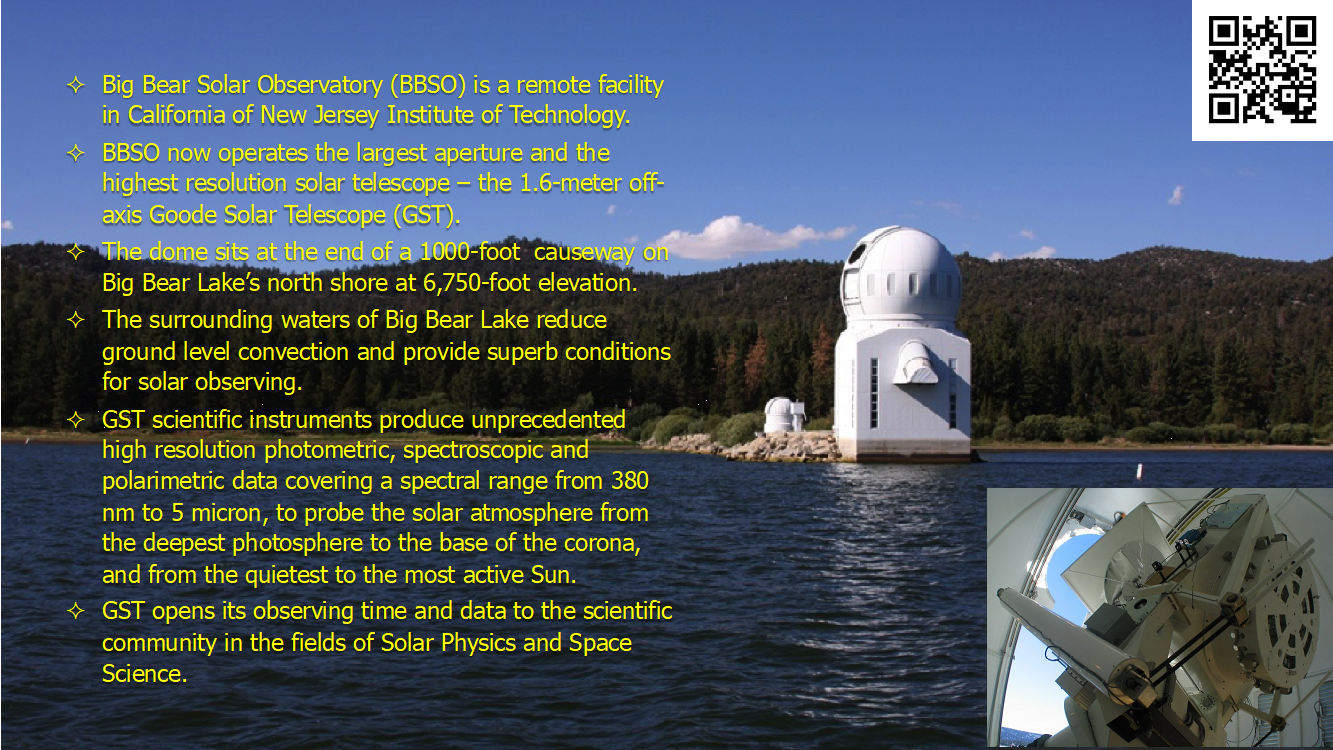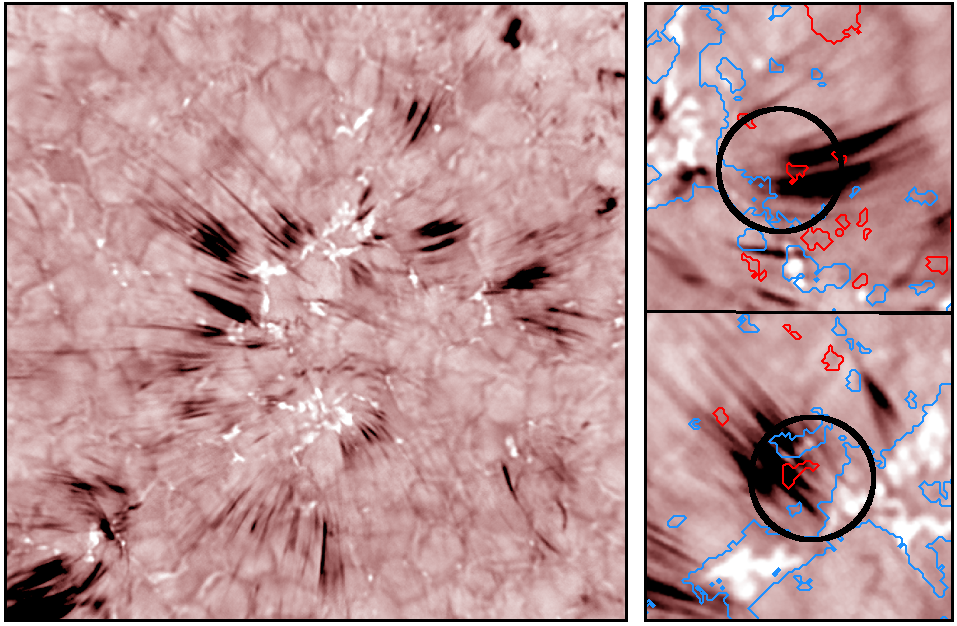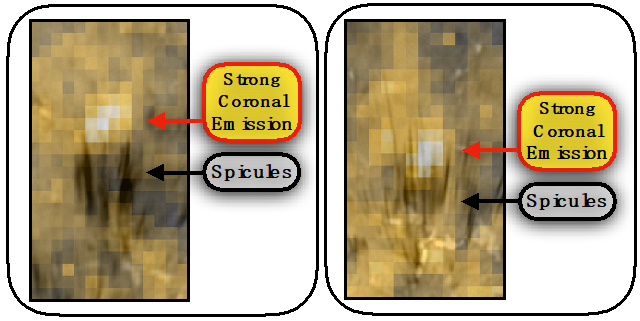
Solar spicules, originally discovered by Father Secchi in 1877, are small-scale (~200-500 km wide) magnetized geyser-like jets observed ubiquitously in the solar chromosphere, the interface between the photosphere and corona. These jets are narrow columns of plasma that dynamically shoot upward to heights of about 5,000 km above the solar surface. It is estimated that at any given moment in time there are about one million spicules in the solar atmosphere, forming a forest of thin and magnetized plasma ejecta. Many solar physicists suspect that spicules serve as a conduit for mass and energy to flow from the lower atmosphere to the corona. In other words, spicules may be the key to solving the coronal heating problem. It is also conjectured that if about 1 % of spicular material is able to leave the Sun in the form of solar wind, that would be sufficient to provide the plasma that is filling the interplanetary space between the Sun and planets. However, it is still unclear whether they provide sufficient energy to sustain the million-degree hot corona and drive the solar wind.
Despite the importance of these magnetized jets, their formation process is still poorly understood. Many hypotheses have been proposed to explain the origin of spicules, such as the passage of shock waves, upward forces associated with magnetized plasma wave propagation, magnetic forces amplified through interactions between neutral and charged particles, warps in two-dimensional sheet-like structures, propulsion by huge magnetized plasma swirls, “reconnection” between oppositely-directed magnetic fields, and so on. To date however, there is still no consensus in the solar physics community on the spicule-production mechanism. A major impediment to our understanding of the formation process of spicules is simply that they are very hard to see well: they are so small (narrow) that they are near the limit of what our earlier telescopes have been able to resolve. That is, earlier telescopes were of insufficient resolution and sensitivity for us to observe spicules well enough to sort through which of the many ideas might be correct. Now, new high-spatial-resolution and high-time-cadence observations have unveiled ground-breaking insight into the generation mechanism of many spicules, and into the possible contribution of spicules to coronal heating.
The present study on this highly-debated and fundamental astrophysical topic of solar spicules was carried out by an international team led by Dr. Tanmoy Samanta and Professor Tian Hui from Peking University, China. Other team members include Cao Wenda, Vasyl Yurchyshyn, and Kwangsu Ahn (Big Bear Solar Observatory, New Jersey Institute of Technology, USA), Hardi Peter (Max Planck Institute for Solar System Research, Germany), Alphonse Sterling (NASA Marshall Space Flight Center, USA), Robertus Erdélyi (University of Sheffield, UK and Eötvös University, Hungary), Feng Song (Kunming University of Science and Technology, China), Dominik Utz (University of Graz, Austria), Dipankar Banerjee (Indian Institute of Astrophysics, India), and Chen Yajie (Peking University, China). The team performed observations with the 1.6-m Goode Solar Telescope (GST) at the Big Bear Solar Observatory (BBSO), the world’s largest-aperture and highest-resolution solar telescope that is currently operational (Fig. 2). The telescope observed copious spicules at ultra-high spatial resolution (~45 km) and high cadence (~3.5 s) using the Hydrogen-alpha (Hα) spectral line, and simultaneously measured the magnetic fields in the solar photosphere at high-spatial resolution (~150 km).

Fig.2. The Goode Solar Telescope at Big Bear Solar Observatory (Image courtesy of Cao Wenda and Philippe Henarejos).

Fig.3. Left: Hα blue wing image showing solar spicules (the elongated dark features). Right: Two examples show that spicules originate from the interaction between opposite-polarity magnetic fields. The overlain blue and red contours represent magnetic fields with opposite polarities (Samanta, Tian, Yurchyshyn, et al. 2019, Science). Data courtesy: BBSO/GST.
Their observations show that the dynamic interaction of magnetic fields with different polarities is responsible for the generation of many spicules. Spicules mostly originate from the boundaries of the so-called magnetic network (a grid-like pattern on the solar surface where the magnetic field is highly concentrated into vertical tubes). Bursts of spicules are often accompanied by the emergence of new magnetic elements near the spicule footpoints, where the newly emerging magnetic elements have a polarity opposite to the dominant polarity of the already existing magnetic network (Fig.3). Although small-scale magnetic flux emerges ubiquitously in the quiet-Sun, only when it is close to the strong existing network fields (often within 3000 km) does it generate spicules. Magnetic flux cancellation (the decrease of magnetic flux with time when two opposite-polarity flux elements run into each other), a signature of magnetic field line reconnection, is clearly identified at the footpoints of some spicules.
These observations strongly support the hypothesis that the process of magnetic reconnection drives many spicules. The new study found this general progression of events leading to spicules: Weak magnetic fields appear frequently near the existing large-scale network fields. Occasionally, small-scale weak fields of polarity opposite that of the network will grow outward and migrate toward the network, where they reconnect with the adjacent or overlying network field in the upper photosphere or low chromosphere, and this produces the spicules.

Fig.4. Two examples showing that coronal emission appears at the top of spicules. Each panel shows a Hα blue wing (grey) image overlain with the simultaneously taken AIA 171 Å (yellow) image (Samanta, Tian, Yurchyshyn, et al. 2019, Science). Data courtesy: NASA/SDO and BBSO/GST.
To learn about the relationship between spicules and the hot solar corona, the team matched the BBSO spicules observations with simultaneous observations from the Atmospheric Imaging Assembly (AIA) on board NASA’s Solar Dynamics Observatory (SDO) spacecraft. From this joint data set, they found that it is very common for spicules to be heated to typical coronal temperatures. Coronal emission (visible in images of the 171 Å passband that is sensitive to emission from million-degree materials) clearly appears at the top of the observed spicules (Fig.4). While connections between some spicules and hot corona have been seen before (e.g., De Pontieu et al. 2011), the team’s cutting-edge observations provide the best evidence yet that magnetic reconnection in the partially ionized lower solar atmosphere drives spicules and produces hot plasma flows into the corona, thus providing a direct link between magnetic activities in the lower atmosphere and coronal heating. Advanced computer simulations and theoretical investigations based on these new groundbreaking observational results should be performed in the future to help solving the long-standing coronal heating problem.
References:
1. T. Samanta, H. Tian, V. Yurchyshyn, H. Peter, W. Cao, A. Sterling, R. Erdélyi, K. Ahn, S. Feng, D. Utz, D. Banerjee, Y. Chen, Science 366, 890 (2019).
3. B. De Pontieu, S. W. McIntosh, M. Carlsson, et al., Science 331, 55 (2011).
Videos (Samanta, Tian, Yurchyshyn, et al. 2019, Science):
http://www.bbso.njit.edu/scinews/SummaryMovie.mp4
http://www.bbso.njit.edu/scinews/LayeredMovie.mp4
Edited by: Huang Weijian
Source: School of Earth and Space Sciences, Peking University